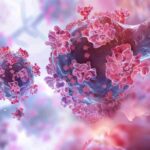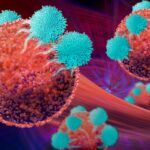Scientific research
Microbiota analysis could help sexual assault investigations by detecting microbial markers of contact, even in cases where traditional DNA evidence is lacking.
Industry
Financing will also support analysis of real-world evidence in people with CF to explore the…
 Explore next events
Explore next events
see all The 2025 Translational Microbiome Conference
Skin Microbiome & Cosmeceuticals Congress: Europe
Latest News
Gastroenterology
L-ornithine can be an additional therapy to boost the efficacy of ustekinumab in people with Crohn’s disease.
Gynecology
By addressing biases and increasing diversity in microbiota studies, researchers can develop more accurate and inclusive health strategies for women…
Industry
This pioneering three-in-one formula uniquely combines pasteurized Akkermansia muciniphila AKK PROBIO, DigeSEB® broad-spectrum digestive enzymes, and B-Complex vitamins.
Video
Matthew Cheng, CEO of Kanvas Biosciences, introduces the company’s cutting-edge spatial biology platform, developed to provide deeper insights into host-microbiome…
Probiotic Database
Discover characteristics, functionalities and scientific support of commercial probiotics and strain.
Upcoming Events in the Microbiota Field

organized by


Experience the world’s nutraceutical event. Vitafoods Europe was launched in 1997 to meet the growing demands of the emerging nutraceutical industry. The first edition featured 100 exhibitors in 2500 square metres of floor space and attracted 1200 visitors. 26 years…
Date
Title
Color
Post Date
April, 2025
Next events
The 2025 Translational Microbiome Conference
Skin Microbiome & Cosmeceuticals Congress: Europe
Webinars
Video, Gynecology
by


Exploring probiotics for menopause with Maider Gutierrez, Business Development Lead for Women’s Health & Healthy Aging, IFF Health: solutions to support women's health and manage symptoms effectively.
Video, Industry
MicrobiomePost carried out a research analysis in collaboration with Analytics Arts to find out more about the motivations and frequency of probiotic consumption and the level of consumer information.
An open discussion about the future of microbiological analysis through AI integration with Franco Pirovano (Micro srl) and Federico Pirovano (Dynius).
Nutrition, Video
Together with Professor Lorenzo Morelli we focused on the significant role of diet and the microbiome in terms of health benefits, food production, and agri-industry systems.
Business News
Industry
Preclinical findings will be presented at the American Association for Cancer Research (AACR) Annual Meeting in Chicago.
Industry
This pioneering three-in-one formula uniquely combines pasteurized Akkermansia muciniphila AKK PROBIO, DigeSEB® broad-spectrum digestive enzymes, and B-Complex vitamins.
Cerenity™ improves mobility, strength, and muscle function in older adults by modulating the gut-muscle axis.
Industry
The Human Gut Microbiome Reference Material (RM) promises to standardize and enhance research efforts in a field poised to transform…
Financial Brief
Key updates on investments, M&As, funding, and market trends shaping the microbiome industry.
Straight from

In collaboration with

Video
Celine Druart, from the Pharmabiotic Research Institute, discusses the new European regulation concerning substances of human origin and the impact on microbiome research and therapeutic development.
Watch the interviews
Video, Gastroenterology
Scientific News
Scientific research
Microbiota analysis could help sexual assault investigations by detecting microbial markers of contact, even in cases where traditional DNA evidence…
Scientific research
A new database of thousands of gut microbiota samples from across the word highlights the need for more diverse microbiota…
Gastroenterology, Scientific research
By suggesting that BA–MCYs can regulate the production of bile acids, the findings of a recent study offer insights for…
Scientific research
Chemical biology offers useful methods to study microbial systems and gather molecular information about microbiomes.

Join

Your go-to destination to spotlight your products and services while connecting with high-value leads in the microbiome sector.
Generate Quality Leads
Tailor a lead generation strategy that aligns with your unique goals.
Expand Your Reach
Position your brand in front of the right audience.
Showcase Your Expertise
Highlight into your company page what makes your business stand out in the microbiome field
















































